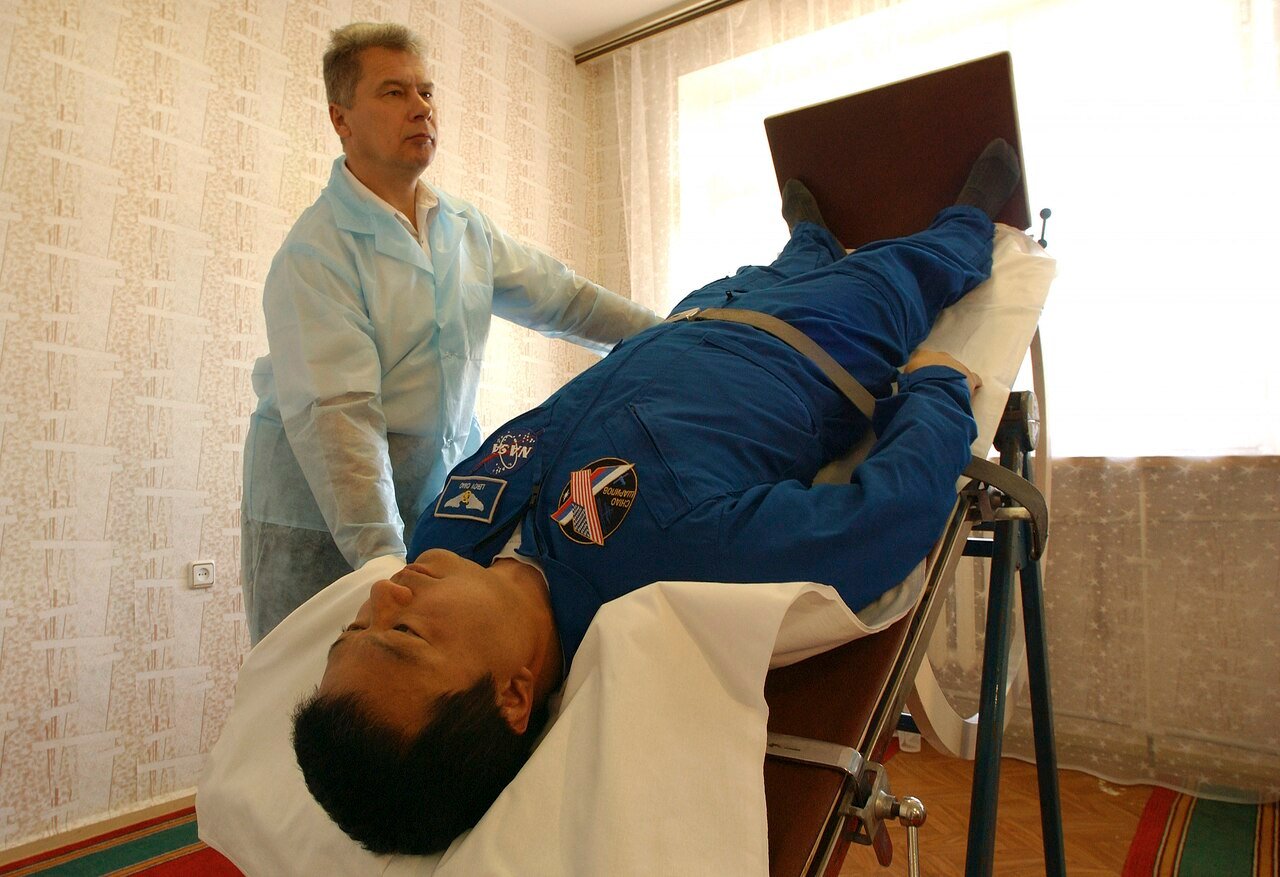Dysautonomia In Depth
What is Dysautonomia? The autonomic nervous system (ANS) is responsible for regulating many of the body’s automatic functions—things we often take for granted, like maintaining a steady heart rate, digesting food efficiently, and keeping blood pressure in balance. When this system malfunctions, the consequences can be profound, leading to a group of disorders collectively known as dysautonomia.
Dysautonomia is not a singular disease but an umbrella term encompassing conditions such as Postural Orthostatic Tachycardia Syndrome (POTS), Neurocardiogenic Syncope (NCS), Multiple System Atrophy (MSA), and others. The symptoms can range from mild disruptions to severely disabling effects, impacting daily life in ways that many may not realize.
Despite its prevalence, dysautonomia often goes undiagnosed or misunderstood, leaving those affected searching for answers. In this blog post, we will dive into the complexities of dysautonomia—examining its symptoms, underlying causes, diagnosis, and available treatment options. By fostering awareness and understanding, we can help support individuals living with autonomic nervous system disorders and advocate for continued research and advancements in care.
Understanding the Autonomic Nervous System
The autonomic nervous system (ANS) is a crucial component of the body’s regulatory system, responsible for managing involuntary functions that keep us alive and functioning efficiently. Unlike voluntary movements controlled by the somatic nervous system—such as walking or picking up an object—the autonomic nervous system operates behind the scenes, ensuring vital processes occur without conscious effort.
The ANS oversees essential functions including:
- Heart rate regulation – maintaining a steady beat that adjusts to physical activity and stress.
- Blood pressure control – ensuring proper circulation to deliver oxygen and nutrients.
- Digestion – managing the breakdown and absorption of food.
- Temperature regulation – adjusting sweat production and blood flow to maintain body temperature.
- Respiration – assisting in breathing adjustments during activity or rest.
- Hormonal balance – coordinating the release of hormones essential for metabolism, stress response, and growth.
Divisions of the Autonomic Nervous System
The ANS is divided into two primary branches that work in opposition to maintain equilibrium:
- Sympathetic Nervous System (“Fight-or-Flight”) When the body perceives stress or danger, the sympathetic nervous system activates, preparing the body to react. It increases heart rate, dilates airways for improved breathing, and redirects blood flow to muscles for immediate action.
- Parasympathetic Nervous System (“Rest-and-Digest”) This system promotes relaxation and recovery. It slows the heart rate, enhances digestion, and supports energy conservation. After a stressful situation, the parasympathetic system restores balance, ensuring the body returns to a state of calm.
ANS Dysfunction & Dysautonomia
Autonomic Nervous System (ANS) dysfunction lies at the core of dysautonomia, a group of conditions that affect the body’s ability to regulate involuntary functions such as heart rate, blood pressure, digestion, and temperature. The ANS is divided into two branches: the sympathetic nervous system, which manages the “fight or flight” response, and the parasympathetic nervous system, which governs “rest and digest” functions. Dysautonomia arises when these systems are out of balance, leading to symptoms that vary widely among individuals.
Common signs of ANS dysfunction include dizziness, fainting, rapid heartbeat, fatigue, gastrointestinal issues, and temperature intolerance. Causes can range from genetic mutations and autoimmune disorders to viral infections or physical trauma. Specific forms of dysautonomia, like Postural Orthostatic Tachycardia Syndrome (POTS) or Multiple System Atrophy (MSA), demonstrate how diverse these conditions can be.
While there is no cure, advances in research and personalized management strategies, including lifestyle adjustments, medications, and therapy, continue to improve the quality of life for individuals with dysautonomia. Early diagnosis and multidisciplinary care are essential for effective symptom management and improved outcomes.
Types of Dysautonomia
Dysautonomia encompasses several disorders, including:
Postural Orthostatic Tachycardia Syndrome (POTS)
Postural Orthostatic Tachycardia Syndrome (POTS) is a condition impacting the autonomic nervous system, where the heart rate increases abnormally upon standing. This often leads to symptoms such as dizziness, rapid heartbeat, fatigue, and brain fog, making daily activities challenging for those affected. POTS can develop following illness, trauma, or hormonal changes and is sometimes linked to underlying conditions like Ehlers-Danlos Syndrome (EDS) or autoimmune disorders. While the condition is most common in teens and young adults, it can affect individuals of all ages and genders. Management involves a combination of lifestyle adjustments, such as increased hydration and salt intake, tailored exercise programs, and medications to improve circulation and reduce symptoms. With growing awareness and research, many individuals with POTS achieve better symptom control and lead fulfilling lives. Early diagnosis and personalized care are essential for effective treatment.

Neurocardiogenic Syncope (NCS)
Neurocardiogenic Syncope (NCS), also known as vasovagal syncope, is a common cause of fainting triggered by an abnormal autonomic nervous system response. This condition occurs when a sudden drop in heart rate and blood pressure reduces blood flow to the brain, leading to a temporary loss of consciousness. Triggers for NCS can include prolonged standing, emotional stress, dehydration, pain, or even specific physical stimuli like seeing blood.
Symptoms often include lightheadedness, nausea, blurred vision, and sweating prior to fainting. While the condition is generally benign, it can be disruptive and may lead to injuries caused by falls. Management typically involves identifying and avoiding triggers, staying hydrated, and sometimes using physical counterpressure maneuvers to prevent fainting. In more severe cases, medical interventions or medications may be recommended. Understanding NCS helps individuals manage it effectively and maintain a better quality of life.
Multiple System Atrophy (MSA)
Multiple System Atrophy (MSA) is a rare and progressive neurodegenerative disorder that affects the autonomic nervous system and movement. It is characterized by a combination of symptoms such as impaired balance, coordination, and muscle control, alongside autonomic dysfunctions like blood pressure irregularities, bladder issues, and difficulty regulating body temperature. MSA is often divided into two subtypes based on predominant symptoms: MSA-P, where Parkinson-like motor symptoms prevail, and MSA-C, which primarily impacts coordination and cerebellar function.
The exact cause of MSA remains unknown, though it is believed to involve abnormal protein deposits in the brain. Unfortunately, there is currently no cure, and the condition progresses over time. Treatment focuses on managing symptoms, improving quality of life, and addressing autonomic challenges with a multidisciplinary approach. Advances in research continue to offer hope for better understanding and care for individuals affected by MSA.
Familial Dysautonomia
Familial Dysautonomia (FD), also known as Riley-Day syndrome, is a rare genetic disorder that primarily affects the autonomic nervous system and sensory nerves. It is caused by mutations in the IKBKAP gene, which lead to impaired development and function of these critical systems. FD is most commonly found in individuals of Ashkenazi Jewish descent.
The condition presents with a variety of symptoms, including difficulty regulating blood pressure and body temperature, reduced ability to sense pain or temperature, gastrointestinal issues, poor muscle tone, and motor coordination challenges. Affected individuals may also experience recurrent pneumonia due to swallowing difficulties.
There is currently no cure for Familial Dysautonomia, but treatment focuses on symptom management and improving quality of life. Multidisciplinary care involving neurologists, pulmonologists, and other specialists is often required. Advances in research offer hope for better treatments and understanding of this complex condition.
Common Symptoms of Dysautonomia
Symptoms of dysautonomia can vary depending on the subtype and severity of the condition. Common symptoms include:
- Lightheadedness or fainting (syncope)
- Tachycardia or bradycardia
- Blood pressure fluctuations
- Chronic fatigue
- Gastrointestinal problems (nausea, bloating, constipation)
- Heat intolerance
- Brain fog or difficulty concentrating
- Visual disturbances
- Excessive sweating or anhidrosis
These symptoms may be intermittent or constant and often worsen upon standing or after exertion.
Causes and Risk Factors
The causes and risk factors of dysautonomia vary depending on the specific type, but generally involve disruptions to the autonomic nervous system’s ability to regulate involuntary functions like heart rate, blood pressure, digestion, and temperature.
Causes may include genetic mutations, autoimmune disorders, infections, or physical trauma. For instance, Familial Dysautonomia is a hereditary condition linked to mutations in the IKBKAP gene. Postural Orthostatic Tachycardia Syndrome (POTS) can develop after viral infections, physical stress, or hormonal changes, while Multiple System Atrophy (MSA) is thought to involve abnormal protein deposits in the brain.
Risk factors range from family history and genetic predispositions to age and environmental stressors. Some forms of dysautonomia, like POTS, are more common in teenagers and young adults, while MSA tends to affect older individuals. Autoimmune disorders and connective tissue conditions, such as Ehlers-Danlos Syndrome (EDS), can also increase susceptibility. Identifying these causes and risks is essential for diagnosis and effective management.

Diagnosing Dysautonomia
Because the symptoms of dysautonomia overlap with many other conditions, it can be challenging to diagnose.
Medical History and Symptom Review
Medical history and symptom review are foundational for accurate diagnosis and effective treatment planning in healthcare. This process involves gathering detailed information about a patient’s current symptoms, their onset, severity, and frequency, as well as any potential triggers. It also includes examining past medical conditions, surgeries, chronic illnesses, or infections that may influence current health. Lifestyle factors, such as diet, physical activity, and stress levels, are explored alongside environmental factors like exposure to heat or allergens. Family health history is also considered to identify genetic predispositions to specific disorders. For conditions like Postural Orthostatic Tachycardia Syndrome (POTS) or autonomic dysfunctions, understanding the interplay between symptoms and medical history is critical. A comprehensive review provides the insights necessary to pinpoint underlying causes and tailor a personalized treatment plan, ensuring better symptom management and overall well-being.
Tilt Table Test
A tilt table test is a diagnostic procedure used to evaluate conditions affecting the autonomic nervous system, particularly those causing fainting or dizziness, such as Postural Orthostatic Tachycardia Syndrome (POTS) or neurocardiogenic syncope (NCS). During the test, the patient lies on a motorized table that gradually tilts them from a horizontal to a vertical position while their heart rate, blood pressure, and symptoms are monitored.
The goal is to recreate the circumstances that trigger symptoms, helping healthcare providers observe changes in the body’s autonomic response to posture shifts. A positive result often shows significant heart rate increases (as in POTS) or drops in blood pressure and heart rate (as in NCS). The test is non-invasive and generally well-tolerated, though some may experience temporary discomfort or dizziness. Tilt table testing is an essential tool for diagnosing autonomic dysfunction and tailoring effective treatment plans.

Blood and Urine Tests
Blood and urine tests are commonly used to help diagnose and manage conditions like Postural Orthostatic Tachycardia Syndrome (POTS) and other autonomic disorders. These tests provide critical insights into underlying imbalances or contributing factors that may exacerbate symptoms.
Blood tests often check for deficiencies in nutrients like iron or vitamin B12, which can contribute to fatigue and dizziness. They may also measure levels of norepinephrine while lying down and standing to identify hyperadrenergic POTS. Additionally, tests for electrolytes, thyroid function, and markers of autoimmune disease are frequently conducted to rule out or confirm related conditions.
Urine tests are valuable for evaluating hydration and kidney function, which are essential for maintaining fluid and electrolyte balance in patients with POTS. They may also help identify issues like urinary retention or protein loss that can contribute to autonomic dysfunction.
Both blood and urine tests play a key role in creating a comprehensive picture of an individual’s health, guiding effective treatment strategies tailored to their specific needs.
Autonomic Function Testing
Autonomic function testing is a specialized diagnostic approach used to evaluate the performance of the autonomic nervous system, which controls involuntary bodily functions like heart rate, blood pressure, digestion, and temperature regulation. These tests are particularly useful for diagnosing conditions such as Postural Orthostatic Tachycardia Syndrome (POTS), neurocardiogenic syncope, and other dysautonomias.
Typical autonomic function tests include the Tilt Table Test, which examines heart rate and blood pressure responses to posture changes, and the Valsalva Maneuver, which assesses heart rate variability during controlled breathing. Additionally, Quantitative Sudomotor Axon Reflex Testing (QSART) evaluates sweat gland activity to detect sudomotor dysfunction. Heart rate variability analysis may be performed to assess how the autonomic nervous system adapts to stress.
These non-invasive tests help pinpoint autonomic dysfunctions, guiding personalized treatment plans to manage symptoms effectively and improve quality of life.

Treating Dysautonomia
There is currently no cure for dysautonomia, but many patients can manage their symptoms effectively through a combination of lifestyle changes, medications, and therapies.
Lifestyle Changes
- Hydration and Salt intake: Increasing fluid and sodium intake can help regulate blood pressure.
- Exercise: Recumbent and gradual aerobic exercises improve cardiovascular fitness.
- Compression garments: Help maintain blood flow and reduce pooling in the legs.
- Elevating the head of the bed: Helps regulate blood pressure during sleep.
Medications
Depending on the specific type of dysautonomia, medications may include:
- Beta blockers to manage heart rate
- Fludrocortisone to retain sodium and water
- Midodrine to raise blood pressure
- SSRIs or SNRIs to support neurotransmitter balance
- Antihistamines for those with Mast Cell Activation Syndrome (MCAS)
Nutritional Support
A nutrient-dense, anti-inflammatory diet can support overall health. Supplements like magnesium, B vitamins, and omega-3s may also be recommended.

Living with Dysautonomia
Living with dysautonomia presents unique challenges, as the autonomic nervous system—the body’s regulator of essential functions—fails to operate as it should. From fluctuations in heart rate and blood pressure to difficulties with digestion and temperature regulation, these disruptions can significantly impact daily life. Yet, despite its complexities, dysautonomia is not an insurmountable condition.
With proper diagnosis and a tailored treatment plan, many individuals find ways to manage their symptoms and regain a sense of control. Whether through medication, lifestyle adjustments, physical therapy, or dietary changes, personalized approaches can help improve overall well-being.
Understanding dysautonomia is key—not only for those diagnosed but for their loved ones and the medical community. By fostering awareness and advocating for continued research, we can enhance support systems and treatment options, empowering individuals with dysautonomia to lead full, active, and fulfilling lives.

Mental Health Support
Living with dysautonomia presents unique challenges—not just physically, but emotionally as well. The unpredictable nature of symptoms, the struggle for proper diagnosis, and the impact on daily life can take a significant toll on mental health. Many individuals with dysautonomia face anxiety, depression, and feelings of isolation, which are often compounded by the fact that the condition is not widely understood.
Because dysautonomia is a chronic and often invisible illness, mental health support becomes an essential component of overall care. Strategies like Cognitive Behavioral Therapy (CBT), mindfulness practices, and participation in support groups can help individuals navigate the emotional complexities of living with this disorder. These approaches provide tools to manage stress, build resilience, and foster a sense of connection with others who understand the challenges firsthand.
In this blog, we’ll explore the intersection between dysautonomia and mental health, highlighting coping mechanisms, therapeutic options, and ways to cultivate emotional well-being. By acknowledging the psychological impact of dysautonomia and prioritizing mental health care, individuals can take meaningful steps toward a more balanced and fulfilling life.

Community Resources
Community resources are invaluable for individuals managing conditions like Postural Orthostatic Tachycardia Syndrome (POTS) and related autonomic disorders. These resources provide education, emotional support, and practical tools to help navigate challenges effectively.
Support groups, whether local or online, connect individuals with shared experiences, fostering understanding and camaraderie. Platforms like Dysautonomia International and local advocacy groups often host webinars, awareness campaigns, and educational materials to empower patients and their families. Additionally, community-based physical therapy programs can offer tailored exercise plans for those managing POTS.
For teens or students, school counselors and accommodations can ensure an inclusive academic environment. Similarly, workplace accommodations can improve professional experiences for individuals with chronic conditions. Multidisciplinary healthcare teams are another resource, helping address symptoms through coordinated care.
Utilizing these resources strengthens the sense of community, encourages advocacy, and creates pathways for a more empowered and supported life.
Frequently Asked Questions About Dysautonomia
What is dysautonomia?
Dysautonomia refers to a group of conditions that affect the autonomic nervous system, which controls involuntary bodily functions like heart rate, blood pressure, digestion, and temperature regulation.
What are the common types of dysautonomia?
The most well-known types include Postural Orthostatic Tachycardia Syndrome (POTS), Neurocardiogenic Syncope (NCS), and Multiple System Atrophy (MSA). Each type presents unique symptoms and challenges.
What causes dysautonomia?
It can result from genetic factors, autoimmune disorders, infections, or trauma. In some cases, the cause remains unknown.
What are the symptoms of dysautonomia?
Symptoms vary but may include dizziness, rapid heartbeat, fatigue, digestive issues, fainting, and temperature sensitivity.
Can dysautonomia be cured?
Most forms cannot be cured, but symptoms can often be managed with lifestyle changes, medications, and supportive therapies.
Is dysautonomia hereditary?
Certain types, like Familial Dysautonomia, are genetic, while others may not have a hereditary component.
How is dysautonomia diagnosed?
Diagnosis typically involves autonomic function testing, tilt-table tests, lab work, and a detailed symptom history.
Can people with dysautonomia live normal lives?
Yes, many individuals with dysautonomia manage their symptoms effectively and lead fulfilling lives. Early diagnosis and personalized care are key.
Conclusion
Dysautonomia is a complex and often misunderstood condition, but with greater awareness and informed care, individuals can navigate its challenges more effectively. While symptoms vary widely from person to person, proactive management—including lifestyle adjustments, medical interventions, and a supportive network—can empower those affected to improve their well-being.
Education and advocacy play a crucial role in ensuring that dysautonomia is recognized and appropriately addressed in medical communities and society at large. By continuing the conversation, sharing experiences, and encouraging research, we can drive progress toward better treatments and, ultimately, a brighter future for those living with autonomic nervous system disorders.
If you suspect dysautonomia, it’s essential to consult a healthcare provider experienced in autonomic disorders for appropriate evaluation and care.

